Nestled in the Ambroz Valley, Hervas It is a very attractive town and one of the main destinations on a tourism route through the north of the province of Cáceres, riding a Estremadura.
It's worth going to Hervas to explore the forests that cover its surroundings and that are gradually turning it into a very important destination in active tourism and nature.
But its cultural and historical heritage It is not far behind.
All the information in detail
- 1 Hervás Jewish Quarter, medieval neighborhood
- 2 Curiosities about the history of the Jewish Quarter of Hervás
- 3 The best things to see and do when visiting the Hervás Jewish Quarter
- 3.1 Great Star of David in Hervás Square
- 3.2 Jerusalem olive tree in the Hervás Jewish quarter
- 3.3 Cactus Courtyard in the Hervás Jewish Quarter
- 3.4 Fuente Chiquita Bridge in Judería Hervás
- 3.5 Callejón de Morón, narrowest street in Spain in Hervás
- 3.6 Artisanal basketry in the Hervás Jewish Quarter
- 3.7 Old Convent of the Trinitarians in Hervás
Hervás Jewish Quarter, medieval neighborhood
In fact, Hervas has always been known primarily for its Jewry, medieval character neighborhood very well preserved where a good number of Jewish families lived during the 15th century.
This set of traditional architecture It is so interesting and so little altered that in 1969 it was declared A Historic.
Its urban layout is very labyrinthine, with narrow passageways and irregular streets, many of them uphill.
Although Hervas There are many other attractions, the Jewish quarter It has long been the main tourist destination.
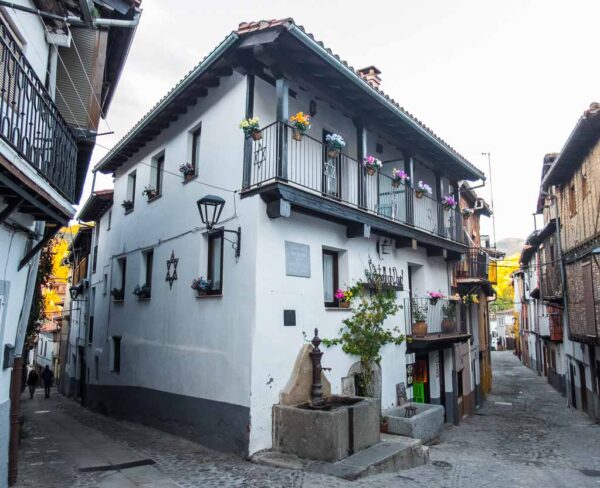
It is one of those spaces full of charm, where the centuries-old popular architecture It has been so well preserved that it conveys the sensation, when walking through it, of a journey through time.
It's a cliché to say something like that, but in this case it makes perfect sense.
Traditional architecture of Hervás: what the houses are like
It must be noted that one of the most interesting aspects of a tour of the Jewry from Hervás is that the houses clearly show the traditional construction forms of the 15th century.
A good number of them do not show any type of plaster that hides the materials used.
Thus it is clearly seen that there is a ground floor built with stone, and a main body of one or two stories of brick or adobea chestnut wood frame, usually covered by cantilever.
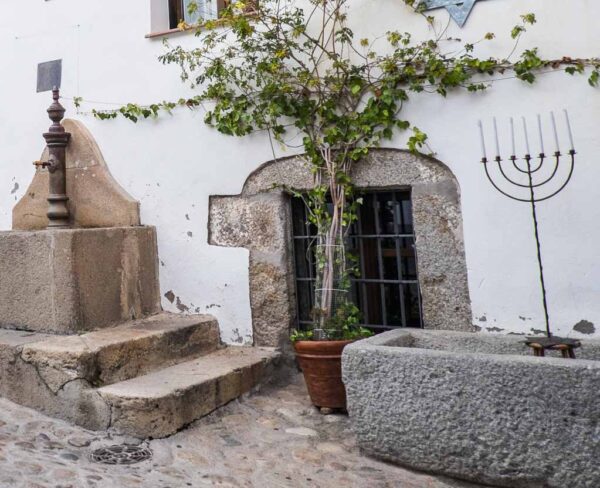
Many houses have projecting balconies, which are usually populated with pots.
It may surprise you when you walk through the Jewish quarter like other neighborhoods Hervas, and also other towns in the area, that some houses have one or two tiled walls.
This is because the rain here combines with the wind and frequently falls at an angle.
The shingles protect the wall as they normally do with roofs.
Curiosities about the history of the Jewish Quarter of Hervás
This neighborhood, which has managed to preserve its medieval imprint, is undoubtedly one of the hallmarks of Hervás.

To visit this Extremaduran town you can sign up for various activities, such as a Free Tour of Hervás, or Free Tour of Jews and converts, and you also have the opportunity to make a 4×4 tour through the Ambroz Valley
In the 90s of the last century, work began on Integral rehabilitation, a pioneer in Extremadura, in which public organizations and the residents themselves participated, which has given excellent results.
How many Jews lived in Hervás and since when?
It is estimated that from the end of the 14th century and almost the entire 15th century, About 45 Jewish families resided in Hervás, an important amount if we think that the total population could be 200.
Many had taken refuge in this place starting in 1391, fleeing anti-Jewish riots in different places in Castile and Andalusia.
ORGANIZE your TRIP
- Don't forget your TRAVEL INSURANCE with a 5% discount
- Book the HOTEL for your trip
- RENT a CAR for your trip
- The best TOURS and EXCURSIONS in Spanish
- NO-LINE TICKETS for museums and monuments
- Best FREE TOURS around the world
- Book your TRANSFER from the airport
- eSIM card with INTERNET at the best price
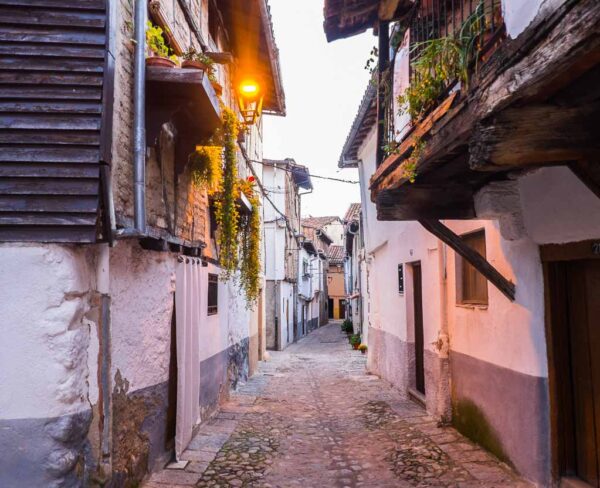
Here they found a small and welcoming town, the protection of the lord of Béjar, on whom these territories depended, and the proximity to Portugal, a country that could become a refuge if the situation became complicated.
Over time a prosperous community was formed, but everything became complicated in 1490 when the Catholic kings they dictated the expulsion of the Jews from Spain.
It is thought that approximately half of the Jewish population of Hervás fled to Portugal and the other half remained in the town, being subject to forced conversion to Christianity.
Years later, some of the fled Jews returned to Hervás.
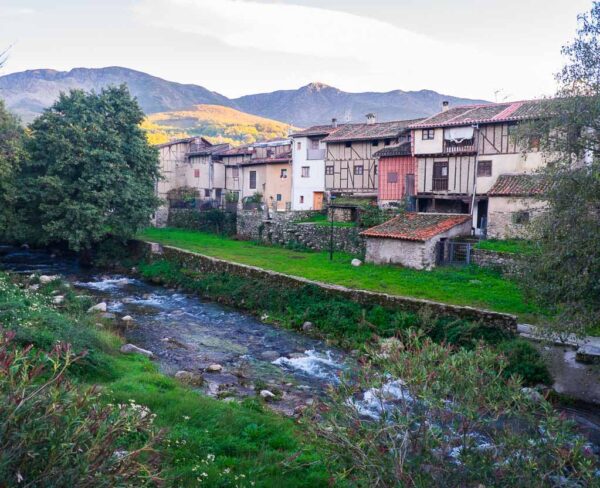
In 1522 the Brotherhood of Our Lady of the Assumption with new Christians.
This brotherhood probably allowed them to maintain some Jewish customs under an appearance of acceptance of Christianity.
It is known that they had their own winepress, which suggests that they continued to make wine according to the precepts. kosher.
We must keep in mind that this neighborhood that we now know as the Jewish quarter It was not a ghetto, but a space where Jewish and Christian families lived together.
The best things to see and do when visiting the Hervás Jewish Quarter
Needless to say, the only way to visit the Jewish quarter from Hervás It is walking given the slopes and sometimes the steps that we will find, in addition to the narrow streets.
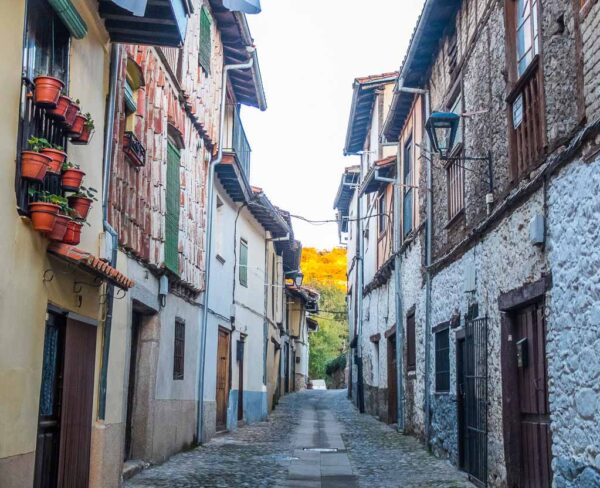
This visit can be done with a map to know where you are at all times, or by walking around at random and letting yourself be surprised by what you discover as you turn each corner.
In any case, the space occupied by the Jewish quarter It is compact enough to travel through it all easily.
At the same time, it must be taken into account that its peculiar labyrinthine layout and slopes They can complicate the visit for people with mobility problems.
Great Star of David in Hervás Square
the journey through the Jewish quarter can start in Square. At one end we will see on the ground a great star of david, which in some way symbolizes the entrance to this neighborhood.
We then take the street that opens in that place, the down street and we immediately felt that we were entering an area of narrow streets and alleys that were somewhat different from the neighborhoods of Hervás that we had traveled through until we got here, which, although with a great traditional flavor, had wider streets.

Jerusalem olive tree in the Hervás Jewish quarter
The first thing we are going to find, in a small square, is an olive tree brought from Jerusalem.
On this street we are already finding good examples of the centuries-old architecture that characterizes the Jewish quarter.
We soon reach a fork with two streets that open around a house with a large balcony and a fountain.
We take the one that comes out on the left, which is the continuation of the one itself. down street.
If we follow it, we will end up reaching the Ambroz River, but just before reaching the bridge we can turn left to take the Cuesta street.
Don't forget your Travel Insurance
Are you organizing your trip or getaway? Don't leave without take out your travel insurance before, and here we explain why. If you hire it with us, you have a 5% discount

Cactus Courtyard in the Hervás Jewish Quarter
After advancing a few meters, on the left we reach the curious Courtyard of the Cactus.
There a neighbor has been forming a cactus garden, many of them tiny, but they form an exceptional group.
Fuente Chiquita Bridge in Judería Hervás
On our way back we arrive at the river, which we can cross by Fuente Chiquita bridge.
The most interesting detail of the bridge is the gravestone which is at the top.
Although much worn, the image of a knight can still be recognized, and the tombstone probably comes from a tomb from the end of the 14th century.
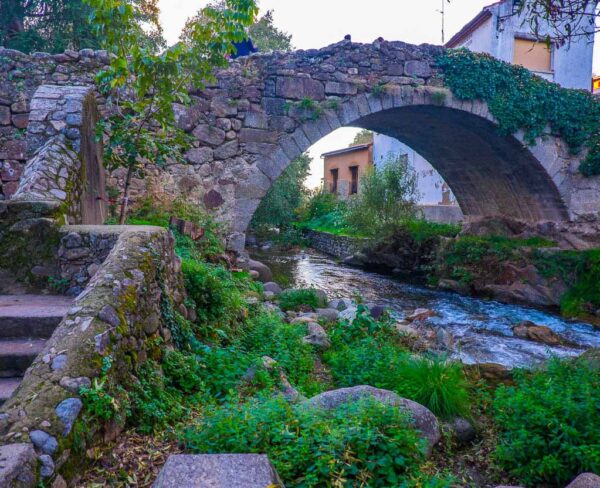
When we cross the bridge we are already outside the town center, and if we turn to the right, we can enjoy one of the best known views of the Jewish quarter.
The space between the houses and the river becomes during the celebration of the Los Conversos Festival on the stage where a dramatic work related to the history of Hervás.
Callejón de Morón, narrowest street in Spain in Hervás
You have to return to the bridge, cross it again and take the left along the Ford Street, which is the one that passes behind the houses that we have seen overlooking the river.
If this street seems quite narrow, you have to look at the Morón Alley, which comes out to our right and is considered as the narrowest street in Spain.
Following the Ford Street we arrive at Judeo-Christian Friendship Street, with a plaque that commemorates the meeting of the two cultures.
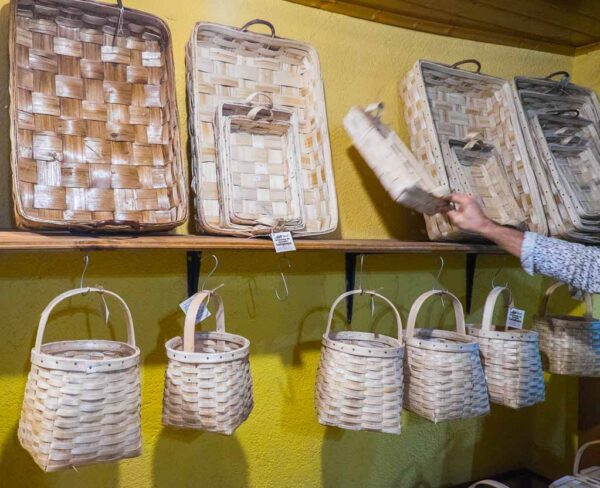
Towards the left we now take the Rabilero street, one of the most interesting of all the Jewish quarter.
Artisanal basketry in the Hervás Jewish Quarter
You should not miss, at number 25, the Longinos Basketry.
This is the last representative of a very ancient artisan basket weaving tradition Made with the wood of chestnut trees in the area.
We can also say that their prices are really cheap for the quality of the work.
Although it has now disappeared, tradition states that at number 19 of this street was the Hervás Synagogue, which was demolished in the 20th century.
Book your hotel, 15% discount, free cancellation
When planning your trip, we advise you to, well in advance, Book your hotel now on booking.com where you can find discounts from 15% and you will have a possible cancellation for free
Su talmudic school It was an important educational center in the 15th century.
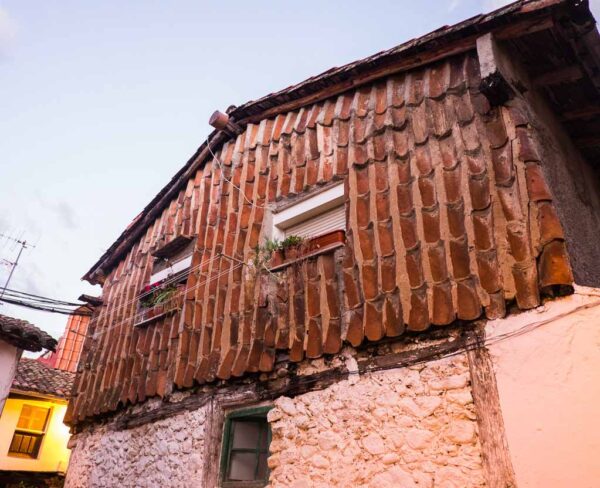
This Jewish temple is also remembered in the Synagogue street, which is already the limit of the urban area.
Now it's time to go up the Cuestecilla street to find the center of Hervás.
Old Convent of the Trinitarians in Hervás
As soon as we left the Jewish quarter We are in a flatter area with wider streets. And if we look to the left, we will see the old convent of the Trinitarians.
From the second half of the 17th century, it is much later than everything we have seen with a strong medieval aftertaste in the Jewish quarter.
But it should be mentioned that this convent was built with the donations of María López Burgalés, a descendant of former Jewish converts.
This tells us that the Jewish presence and heritage in Hervás It lasted much longer than the century in which a series of families lived in this town in good coexistence with the Christian majority.


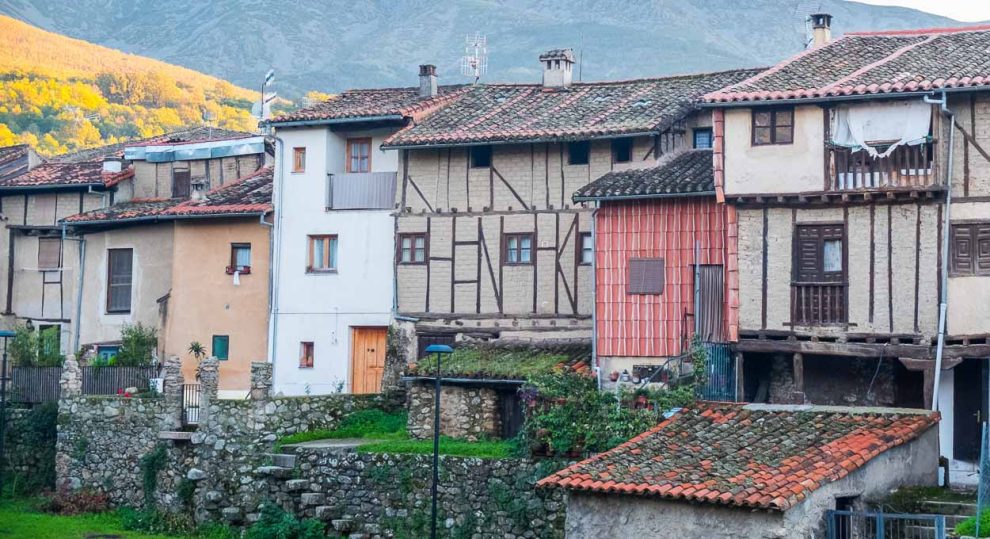

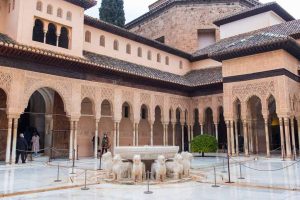












Comment